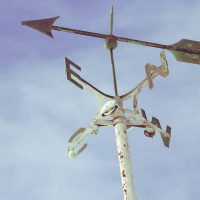Is it possible to have a collision with other planes up in the sky?
The sky above us is a pretty enormous space. It’s large enough that there are literally thousands of airplanes flying above the continental United States during the day with plenty of room to spare. However, some people with a fear of flying might worry that, with so many planes in the sky, their plane could possibly collide with another. Fortunately, there are a number of reasons why that will never happen.
First, all airline flights are operated in close coordination with Air Traffic Control (ATC). This means that all airplanes are being monitored and guided by highly trained and experienced controllers on the ground. The Federal Aviation Administration (FAA), which is tasked by the Federal Government with monitoring all aspects of airline operations, also overseas controller’s training, certification, and operation. Many years of specialized training and experience are combined with sophisticated radar and communications networks, enabling Air Traffic Controllers to guarantee that all planes are safely and efficiently routed to their destination. As such, all of the airliners in the sky are required to maintain minimum levels of separation with respect to vertical and horizontal distances. This is enforced by controllers who direct the planes from takeoff until touchdown using radar and two-way radio communications. Flight paths and altitudes of individual airliners are continuously monitored and adjusted so as to ensure minimum safe distances between planes, while also improving the flow of traffic between regions and airports.
…all of the airliners in the sky are required to maintain minimum levels of separation with respect to vertical and horizontal distances.
Given air travel’s intensive focus on safety, highly skilled human beings are not the only means of preventing mid-air collisions. Each and every airliner also has an on board computer that offers a fail-safe backup. These “Traffic Collision and Avoidance Systems” (TCAS) monitors each airplane’s position and simultaneously communicates with the TCAS computers on board other airplanes. The computer basically tracks the flight paths and altitudes of all planes operating in its vicinity. It then calculates whether or not another plane’s trajectory could result in that plane coming too close to your flight. If there is even a slight possibility of a conflict, a warning goes off to alert the pilots. This alert comes in the form of very loud and repetitive audial as well as visual cues that would be impossible to miss.
More importantly, the computer does not wait for there to be a “close call” before taking action. It is always actively searching for possible conflicts well before the two planes are anywhere near each other. This means that warnings may be issued when the planes are still many miles away from each other, providing ample time for pilots in either plane to take corrective action.
Computers monitor both the horizontal and vertical path of each plane and then determine what directional changes must be made by each plane in order to avoid a collision.
Additionally, the TCAS system does one other crucial job. When there is a potential conflict between the paths of two planes, the TCAS computers on board each plane also communicate with each other. They monitor both the horizontal and vertical path of each plane and then determine what directional changes must be made by each plane in order to avoid a collision. The end result is both an audible and visual message to the pilots, instructing them on what action to take in order to avoid the other plane. Typically, this would mean telling one of the planes to climb and the other to descend. Pilots are frequently trained and required to respond to any TCAS warning immediately and ensure that their plane maintains a safe distance from all other aircraft. The end result of all this training and equipment is a fool-proof guarantee that your flight remains a safe distance from every single airplane in the sky!






